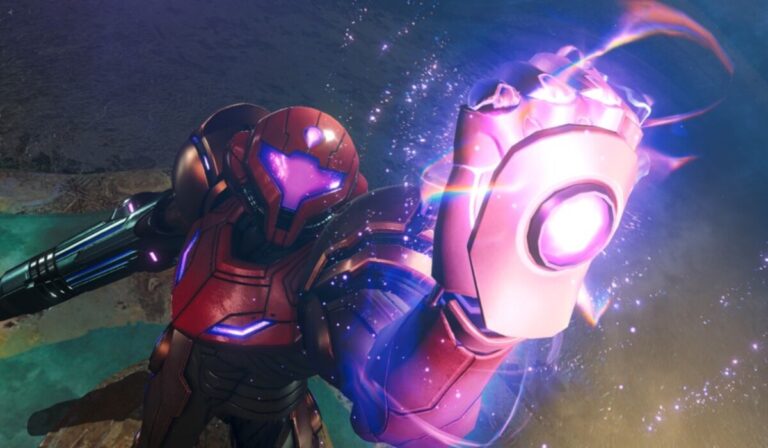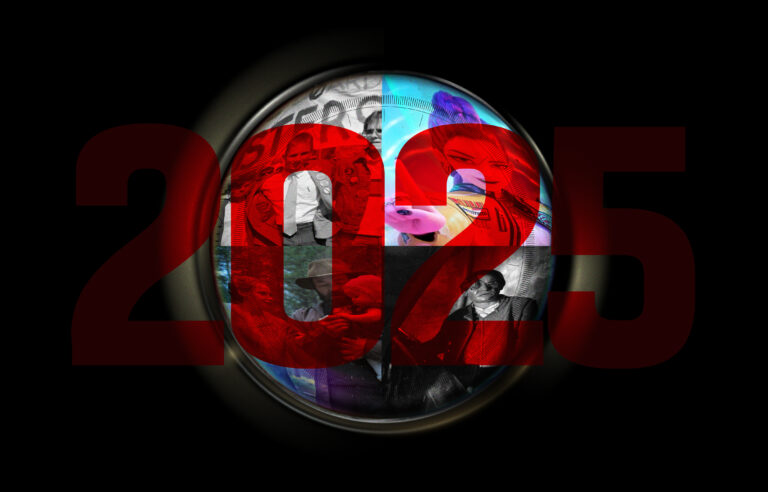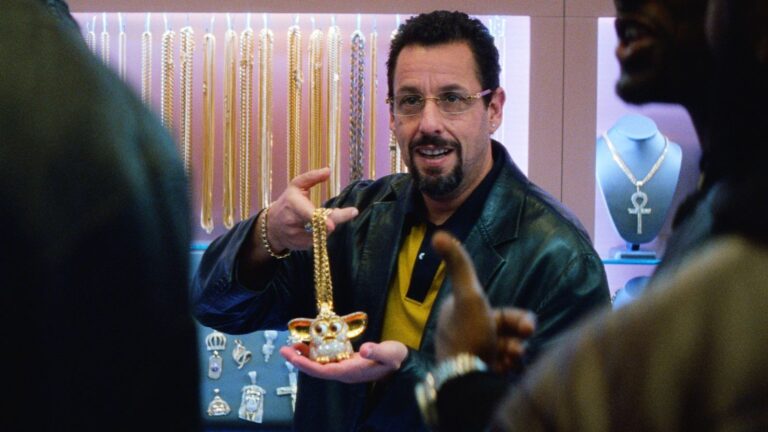The movie industry continues to be in turmoil. Many highly anticipated titles underperformed at the box office this year, showing that name recognition alone no longer guarantees turnout.
Netflix’s recent announcement about acquiring Warner Bros. also raised questions about the future of cinema. It seems that more people prefer to watch new releases in the comfort of their own homes, and the deal threatens to push audiences even further toward streaming-first habits.
Thankfully, there’s still plenty to watch, from scary good horror to moving dramas and laugh-out-loud comedies. We had trouble narrowing down this list, but we gave it a shot anyway. Here are the movies that shook us to our core in 2025.
Deaf President Now!
Apple TV+ has the bad habit of releasing incredible content, and then doing barely any marketing to inform people know it’s there. That was the case for Deaf President Now!, a documentary about a 1988 student protest at Gallaudet University. Back then, students walked out to demand a deaf president and more representation.
The film not only covers a foundational moment for disability rights in the US, but also explores its legacy and what it meant to a community long marginalised in academia. At the same time, it reminds us that people can be powerful when they band together to make a statement. Something worth remembering when apathy seems to win over action again and again.
KPop Demon Hunters
If you somehow missed out on one of the biggest surprises of 2025, it’s never too late to catch up. The hype surrounding KPop Demon Hunters is well-deserved.
As the title suggests, the plot follows a globetrotting K-pop girl group who are secretly demon hunters fighting supernatural threats. The film delivers catchy songs, vibrant visuals, and engaging action. It’s definitely not just for kids. Plus, we can almost guarantee you’ll blast the soundtrack at full volume for days.
Train Dreams
A meditative film that might challenge attention spans in 2025, Train Dreams is based on the novella of the same name by Denis Johnson. It follows a man in the early 20th century whose life unfolds against towering forests and the brutal realities of a changing world.
Train Dreams is ambitious in scope but intimate in delivery and reflective without being preachy. The kind of film that stays with you for a long time.
One Battle After Another
Much has been said about One Battle After Another this year, with critics and viewers quick to crown it as one of the best films of the decade. Whether that acclaim holds, time will tell. For now, we agree that it’s very, very good.
The story centres on a former left-wing revolutionary whose old enemies resurface, forcing him and a group of ex-radicals into a chaotic rescue mission. Expect high-stakes action, political commentary, family drama, and enough dark humor to keep you on your toes. If you haven’t seen it yet, experience it on the biggest screen at your disposal.
Frankenstein
Directed by Guillermo del Toro, this adaptation of Frankenstein reimagines the classic tale with style to spare. It tells the story of an arrogant scientist who creates new life.
As his Creature gains sentience, he experiences dejection and isolation. The creator, meanwhile, grapples with the unexpected consequences of playing god. The film beautifully explores otherness, making it a delicious gothic treat.
The Girl with the Needle
The Girl with the Needle may have officially premiered in 2024, but it didn’t reach wide release until early 2025, so we’re counting it.
The story revolves around Karoline, a young woman struggling in 1919 Copenhagen. Desperate, pregnant, and alone, she crosses paths with the charismatic woman who runs a clandestine adoption agency. Karoline becomes a wet nurse, only to discover that the agency is built on deadly secrets.
As harrowing as it is gripping, this is the kind of film that lingers. The fact that it’s loosely based on true events only makes it more impactful.
Sinners
Vampires never truly went out of style, but Sinners makes them feel fresh again. Set in the ’30s, the film follows twin brothers who return to their hometown to open a juke joint. Before long, they find themselves drawn into a supernatural evil.
Sinners is a mix of genres spanning horror, musical, and thriller. It’s never boring despite the lengthy runtime. The cinematography is outstanding.
Also, you know how some horror deaths don’t hit because you haven’t spent enough time with the characters to care? That’s not the case here. The film takes its time introducing each player. Before you know it, you’re hooked.
Sorry, Baby
Healing is messy and unglamorous. Sorry, Baby captures the process to a T. It revolves around a literature professor at a small liberal-arts college trying to piece her life back together after a traumatic event.
Despite the serious subject matter, the film is infused with tenderness and humour. Add a knockout lead performance into the mix, and you’ll be unable to look away. It also leaves you with a sense of hope, which is remarkable.
Twinless
A psychological black comedy, Twinless is the kind of film best enjoyed by going in blind. As a result, we won’t reveal much about the plot, except to say that it’s about two men who strike a friendship under unusual circumstances.
The story touches upon identity, loneliness, and grief, while also keeping the proceedings darkly funny. Beautifully acted and well-crafted, it surprises you in the best possible way. Catch it in UK cinemas starting February, 2026.
The Long Walk
While Stephen King adaptations can be hit-and-miss, The Long Walk delivers big time. That’s mainly thanks to a dedicated cast of young actors who deserve all the accolades. Based on the novel of the same name, the film is set in a dystopian version of the ‘70s and centres on a competitive walking marathon.
Simply put, you follow a group of boys who walk for days on end. If they stop or slow down, they’re brutally murdered. Only one can be victorious, but that doesn’t prevent them from bonding along the way. Your feet will burn by the time the film ends, regardless of how comfortable your position.
Sentimental Value
Sentimental Value follows two estranged sisters who reunite with their father after their mother’s death. A film director, he announces that he plans to make a film about their family history, which forces everyone to confront their past.
The story captures the weight of legacy in a way that feels real. The dialogue soars, the direction is thoughtful, and the cast is a joy to watch. Sentimental Value is a masterful exploration of family, as well as the fine line between the personal and art.
Black Bag
A British intelligence officer’s world turns upside down when he is asked to investigate a suspected security leak. Shockingly, his wife is among the prime suspects. Over a tense week, he has to do whatever he can to untangle a complicated web of deception.
If you love spy thrillers, especially the kind that focus on mind games rather than pure action, Black Bag is a definite hit. That said, the personal stakes make it appealing to all demographics, and the fine acting is the cherry on top. The film is suspenseful, clever, and fun. In other words, everything you could ask from the genre.
One of Them Days
One of Them Days is a wild ride. It centres on two best friends who embark on a memorable adventure through LA, hoping to scrounge up rent money and avoid eviction. Their shenanigans include dodging loan sharks, donating blood, and selling sneakers.
The film is a genuinely funny buddy comedy, with the kind of chemistry between the leads that instantly elevates it. You root for these two every step of the way, with a big smile on your face.
Hamnet
Based on the book by Maggie O’Farrell, Hamnet imagines a sorrowful chapter in the early lives of William Shakespeare and his wife, Agnes. When their young son, Hamnet, dies, the couple is plunged into a grief that reshapes their family.
Hamnet breaks your heart. Thankfully, it also takes the time to put it back together. Featuring mesmerizing performances, it’s a feast for the eyes and mind alike. The film’s finale is the perfect amount of overwhelming.
The Ballad of Wallis Island
As gentle as it is memorable, The Ballad of Wallis Island is about a lottery winner who retreats to a remote Welsh island. He dreams of reuniting his favourite folk duo, so he invites the former bandmates to the island for a private concert, sparking a bittersweet reunion.
Perfectly blending art and romance, the film is like a warm hug. It helps viewers ponder upon the past, while also gearing up for the future. As a nice bonus, it also makes them laugh.
More great movies: Rental Family, Bring Her Back, Good Boy, The Ugly Stepsister, Weapons, If I Had Legs I’d Kick You, Mickey 17, Marty Supreme.










